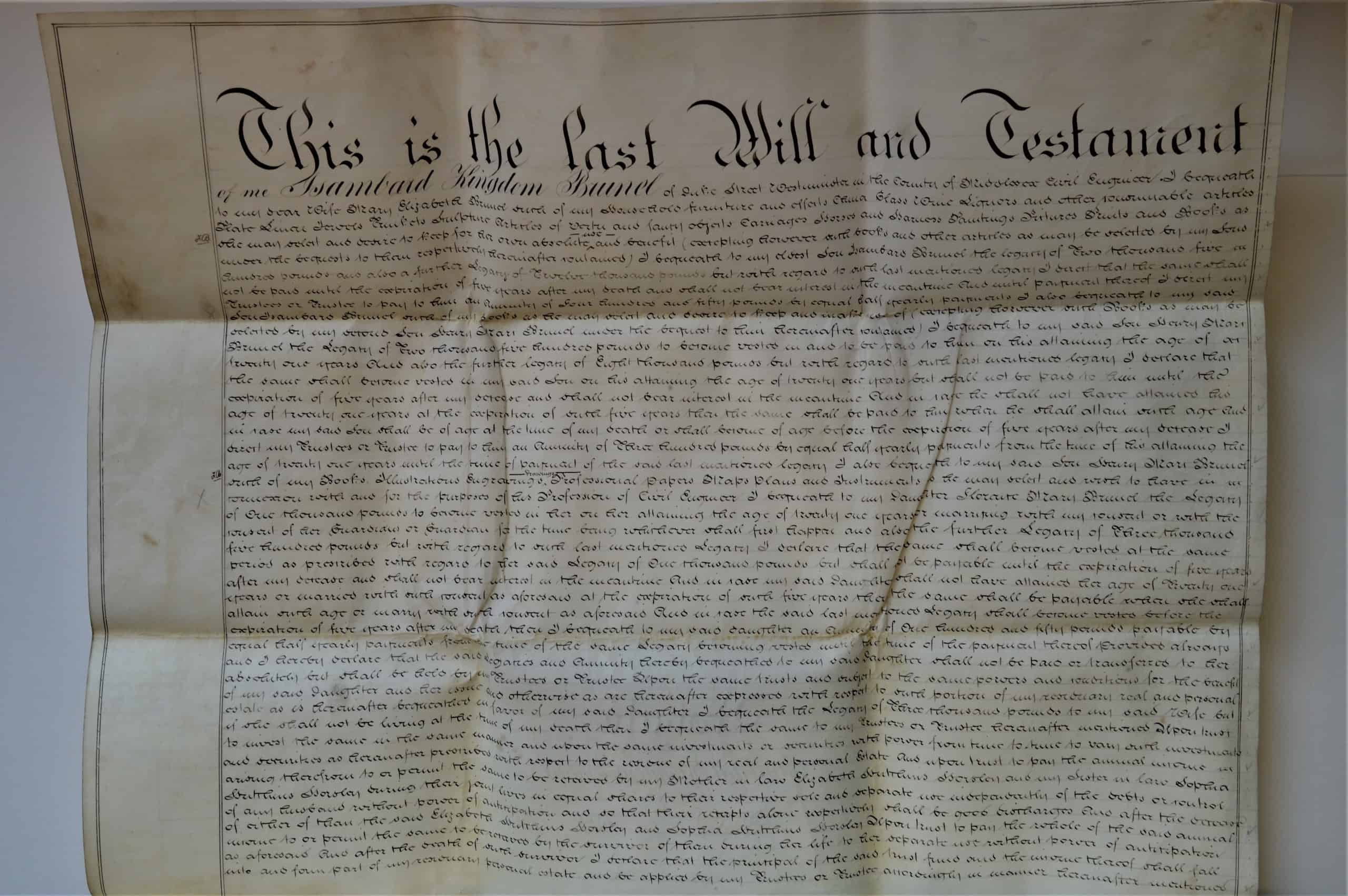- This is the first page of Isambard Kingdom Brunel’s will. It was written on 3 December 1858, 9 months before he died.
- There are 6 pages in total, written on folded vellum (a paper-like material made of animal skin) explaining how Brunel’s money, estates, and investments should be divided after his death.
- Brunel died leaving belongings worth £90,000 (estimated to be around £10m in today’s money), mostly to his wife Mary and their three children: Isambard Brunel Junior, Henry Marc Brunel and Florence Mary Brunel.
- Smaller amounts of £100 were also left to Benjamin Hawes (Brunel’s good friend and brother-in-law), and Brunel’s family doctor Seth Thompson Esquire, both of who were executors of Brunel’s will (the people in charge of making sure Brunel’s wishes were carried out).
The Story
Brunel’s last year
In 1858, at the age of 52, Isambard Kingdom Brunel was working on his third, and largest, ship the SS Great Eastern. It proved to be an extremely difficult and expensive project. The work took its toll on Brunel; he became seriously ill and was suffering with exhaustion. He was later diagnosed with ‘Bright’s disease’, a disease of the kidneys, and ordered by his doctor to spend the winter in Egypt with his family to relax.
Accompanied by his wife Mary and son Henry, Brunel spent Christmas Day in Cairo with his great friend and fellow engineer Robert Stevenson (who was also suffering with Bright’s Disease). Relaxing, however, was not in Brunel’s nature, and the remainder of his trip was spent sailing up the River Nile, taking a trip to Philae on a donkey and even sailing down river rapids!
Brunel returned home in May 1859 and, ignoring concerns about his health from his friends, he returned to work on the SS Great Eastern. He put huge pressure on himself to not only check every detail of the newly installed engine, but every other bit of equipment on the ship, even down to the type of mirrors and velvet to be used in the ship’s cabins.
On 5 September 1859, the day of the Great Eastern’s maiden voyage, Brunel had a stroke and collapsed on board the ship, just moments after he had had his photograph taken against one of the funnels. He was taken to his home and the SS Great Eastern set sail without him.
Brunel died 6 days later, on the 15 September 1859, less than a year after he had written his will. His friend Robert Stevenson died shortly after on 15 October; their deaths were a great loss to the world of Victorian engineering.



